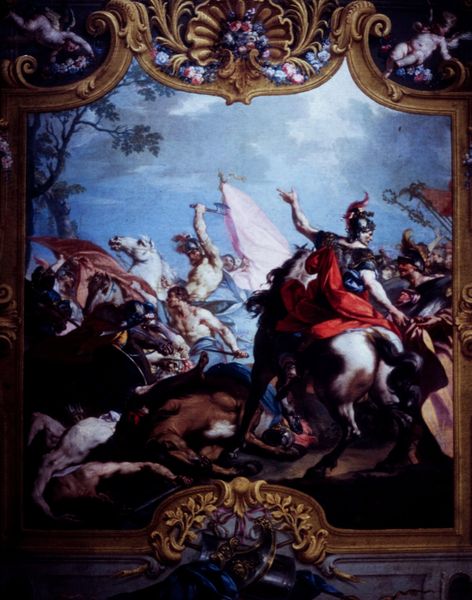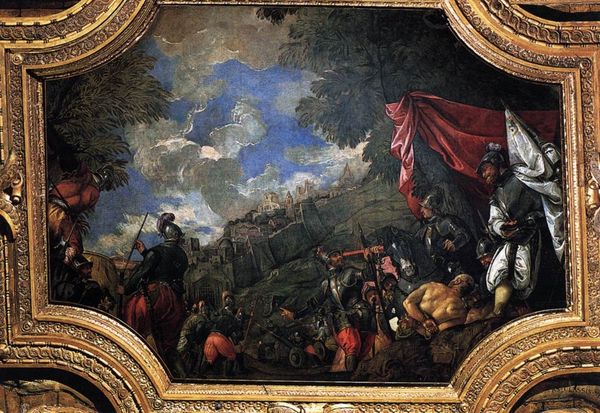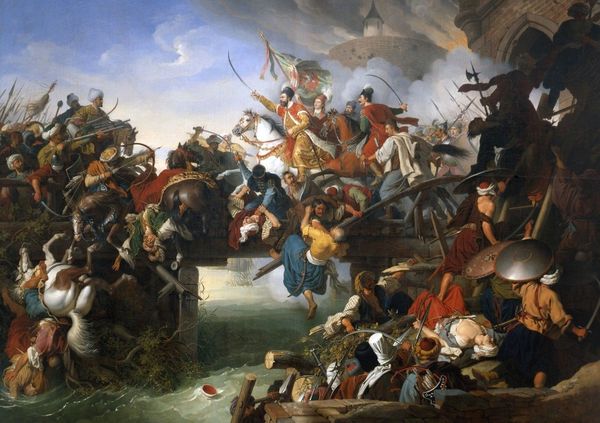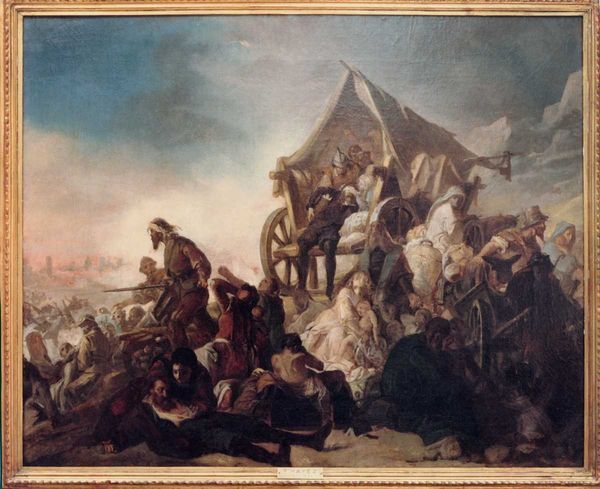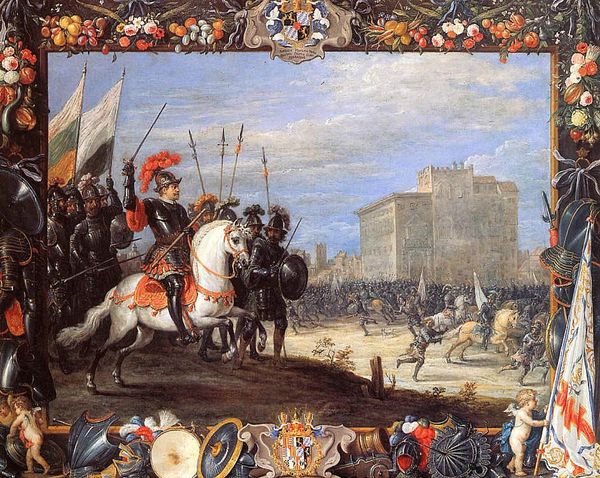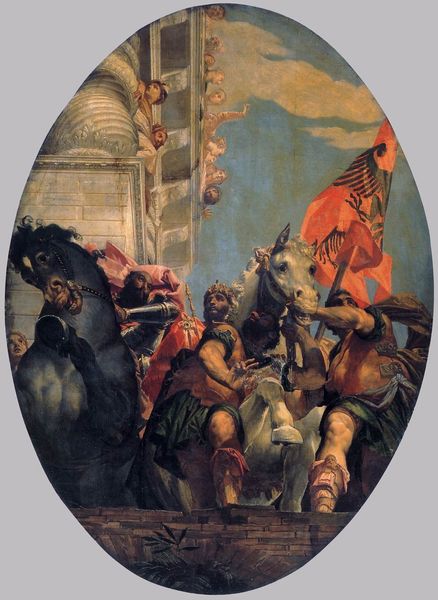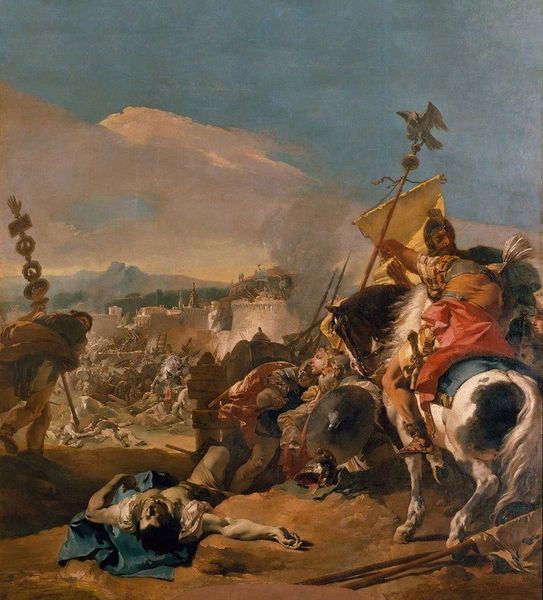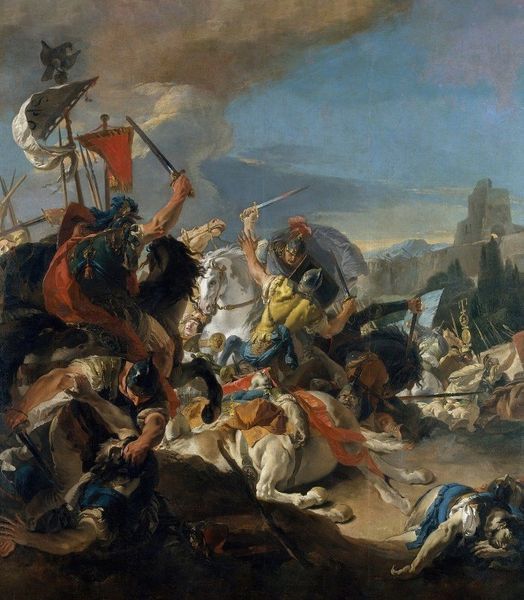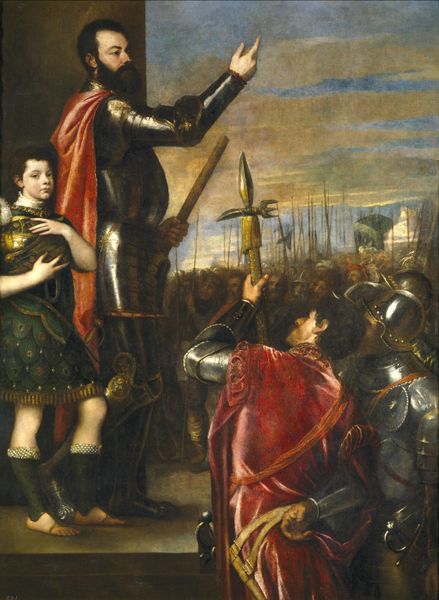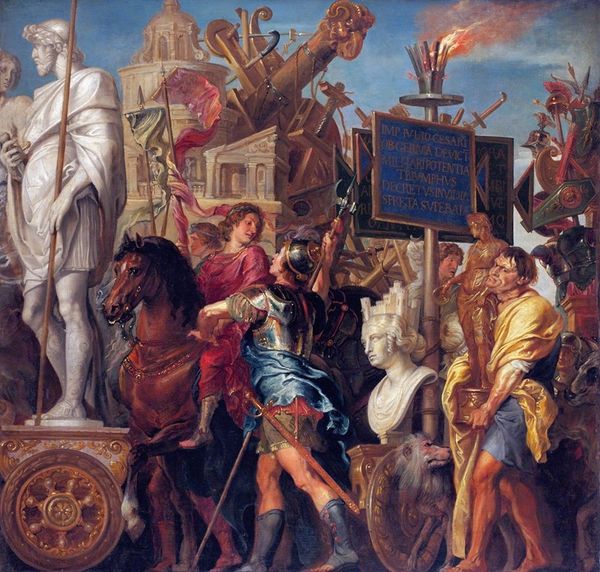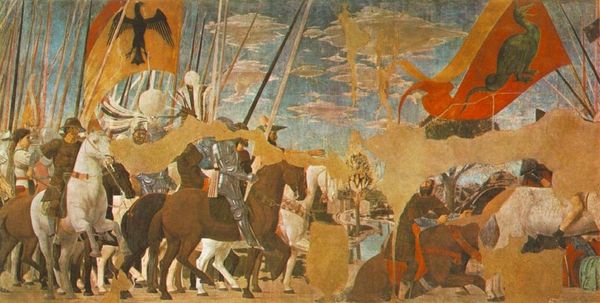
painting, oil-paint
#
venetian-painting
#
narrative-art
#
baroque
#
painting
#
oil-paint
#
sculpture
#
figuration
#
oil painting
#
history-painting
Copyright: Public domain
Palma il Giovane painted ‘The Conquest of Padua’ for the Doge’s Palace in Venice. It evokes a moment of Venetian military history. But it does more than commemorate the past. It asks questions about the present and future of Venice as an imperial power. In the late 16th century, Venice was at war. Padua was a strategically important city on the Venetian mainland. The scene depicts Venetian troops storming the city, with flags flying, in what appears to be a moment of triumph. Yet the image also shows the chaos, violence, and death that accompanied military conflict. In the context of the Doge's Palace, this picture is meant to convey an image of strength and victory to visiting dignitaries. But by including the unpleasant realities of war, Giovane asks the viewer to consider the human cost of Venetian imperialism. Historians can examine the socio-political context of the artwork and access military records, diplomatic correspondence, and other visual sources to understand what the conquest of Padua meant at the time, and what it might mean today.
Comments
No comments
Be the first to comment and join the conversation on the ultimate creative platform.
